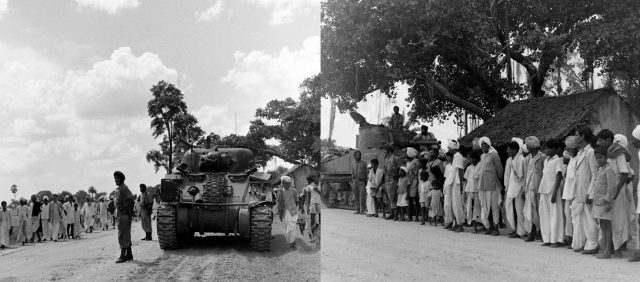
–Ananth Seth
In August 1947, the first State which posed a serious problem to the newly formed Union Government was the erstwhile State of Hyderabad, which had an overwhelming Hindu majority but was ruled by Nizam, who was a Muslim. While the rest of India was celebrating Independence on 15th of August, 1947, Nizam’s Hyderabad was witnessing a different scenario: the processionists were being caned, fired upon and arrested by Nizam’s Police. Razakaars (private militia of Nizam) were attacking the celebrationists and the Indian National Flag was being torn apart. It was amply evident that the rulers of the erstwhile Hyderabad state and their cohorts, were not inclined to celebrate Indian Freedom. The reason is not difficult to fathom: Nizam and his ilk neither considered themselves Indians nor wanted to be so.
In his book Pilgrimage to Freedom, Dr. KM Munshi, India’s Agent General in Hyderabad before the Police Action in Hyderabad, had written that the Nizam of Hyderabad had set his heart on becoming a third Dominion of the British Commonwealth. When Nizam saw that Clause 7 of the Indian Independence Bill did not permit the grant of Dominion Status to an Indian State, he had lamented against the “way in which my state is being abandoned by its old ally, the British Government, and the ties which have bound me in loyal devotion to the King Emperor are being severed.”
Some of the ‘hallmarks’ of Nizam’s regime were suppression of Indian Culture and Hindu religion, victimization of Indian Nationalists, banning symbols of Indian civilization, forced conversions, promotion of Urdu at the cost of local languages like Telugu, Kannada and Marathi and above all, elimination of vocal voices against the Islamist tyranny through rape and day light assassinations.
In addition to the Islamist zealots Razakaars, the Communists were also a menace. In his wonderful book The Story of Integration of Indian States, author VP Menon (not to be confused with Nehru’s ‘closest ally’ VK Krishna Menon) has said the following regarding the Communists in the erstwhile state:
“…people went to the extent of saying that the Razakars ruled by day, while the Communists ruled by night…subsequently the Communists allied themselves with the Razakars who, for a time, had become the virtual masters of Hyderabad…the Razakars and the Communists were truly an ill-assorted pair, for whereas the former wanted to establish a Muslim oligarchy in the State, the latter’s purpose was to exploit the turmoil and confusion so that they could take possession of the State and ultimately spread their tentacles to the rest of India”
All efforts of Indian govt, including signing of the Stand Still Agreement bore no fruit and Hyderabad State continued to dodge efforts aimed to bring it into the Indian Union. Nizam’s government started moving towards independence by divesting itself of its Indian securities, banning the Indian currency, halting the export of precious metals and ground nuts, organising illegal gun-running from Pakistan, and inviting new recruits to its army and to its private Militia – the Razakaars. Though Nehru was all but oblivious to these problems, these developments alarmed the then Home Minister Sardar Patel who had famously described an independent Hyderabad as “an ulcer in the heart of India which needed to be removed surgically.”
These events culminated in Sardar Patel instructing and authorizing Indian Army to execute Operation Polo – the code name for a brief 5-day Police Action which liberated Hyderabad from the clutches of Nizam. It commenced on 13th of September 1948 and ended swiftly on 17th of September, 1948 with the surrender of Nizam and the liberation of the erstwhile Hyderabad State.
On the eve of Hyderabad Liberation Day, let us not forget that but for the timely and effective action by the Unifier-in-Chief of Modern India Sardar Patel, Nizam and the Razakaars could as well have succeeded in their diabolical ambitions.
Jai Maa Bharti.














